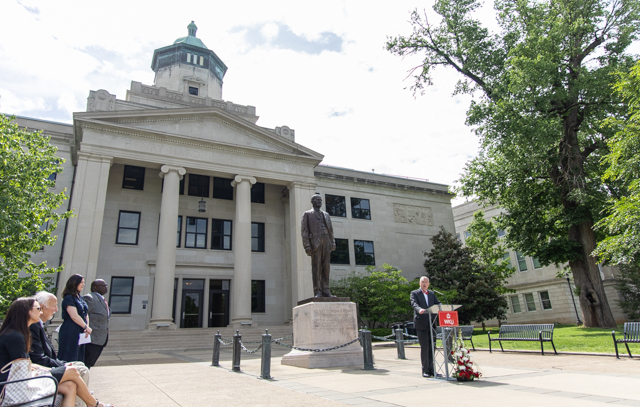Book review: ‘Saving Central Park’
Published 12:00 am Sunday, June 10, 2018

- BOOK REVIEW
“Saving Central Park: A History and a Memoir” by Elizabeth Barlow Rogers. New York: Alfred A. Knopf, 2018. 312 pages, $30 (hardcover).
In her introduction to her new book, “Saving Central Park,” Elizabeth Barlow Rogers explains: “When Central Park was on the brink of collapse, I became, through a combination of zeal and luck, the leader of the cause to save it from destruction. Because what was being saved – and still must be protected – is both a masterpiece of landscape design and a great democratic institution, what follows is as much a history of how the park itself was built and altered during successive eras as it is a chronicle of my role in its renaissance.”
First-time visitors to Central Park today would find it difficult to believe that at one time city residents would not allow their children to play there because it had fallen into such disrepair and was often the home to drug dealers and their clients. In her first chapter, “Near Death,” Rogers says: “An estimated 50,000 square feet of graffiti covered walls, statue bases and bedrock outcrops. Unvegetated slopes eroded, exposing the roots of dying trees.”
The author explains some of the difficulties she faced in trying to spark interest in reversing the degradation of Central Park: “Stigmatized as an elitist, a woman no less, with an impractical vision that impinged on the management system of an established civil service bureaucracy, I found myself confronting a unionized labor force that was reluctant to work alongside volunteers and outside hires whom they considered a threat to their jobs.” (p. 25).
In 1976, she published an article in New York Magazine titled “32 Ways Your Time and Money Can Save Central Park.” In the week after the article appeared, numerous letters including checks began to appear on her desk, totaling $25,000 in one week. The letters testified to the importance that Central Park had played in the lives of so many people from assorted backgrounds and from across the country. Rogers was able to offer to willing donors specific tasks they could help with, such as “Rebuild the Belvedere Castle,” ”Repair the Wisteria Pergola,” “Organize a Weed Patrol” and “Work With the Zoo Animals.” The Central Park Conservancy, led by Rogers as founding president, would ultimately succeed in forging bonds between public and private efforts to reverse the park’s deterioration and once again make it the beautiful refuge that so many New Yorkers treasure on a daily basis. By the time she finally left office at the end of 1995, the Conservancy had put just more than $100 million of private money into the park. By the time she was writing this book more than 20 years later, that total had grown to $875 million and the annual visitor count had risen to more than 42 million.
The book is illustrated throughout with helpful images of the park, several in black and white and others in lovely color, and a bibliography and index are also included. In the historical chapters, Rogers documents the original design competition won by Frederick Law Olmstead and Calvert Vaux and explains the design features in Olmsted’s vision and how subsequent generations modified his principles, attempting to create what was more important to them. For example, between 1934 and 1961, Robert Moses sought to respond to the growing American desire for leisure by “converting vacant land into playgrounds, community recreation centers and school farms.” Moses installed asphalt paths and parking lots and favored creating numerous playgrounds, three sets of ballfields with several diamonds each, and two ice skating rinks. Rogers reminds readers that “Central Park was not vacant land but a landscape with already established forms of recreation and a historic design of signal beauty.” (p. 97). An early project of the Conservancy was converting the carriage turnaround at Cherry Hill from a parking lot to its original form, including a horse drinking fountain.
Some readers will question the logic behind the decision to include chapters on Rogers’ personal garden and her travels to Maine and several countries in Europe and Asia, but even here Olmsted’s principles of landscape planning are referenced in connection to the design of Central Park. Others may find it odd that the final chapter on Christo’s installation of The Gates in Central Park in 2005 was included at all, especially when speculation on the future of the Conservancy and the park itself may have been more relevant. A map of the park would also have been helpful, especially for those who aren’t familiar with its features, to show where the Bramble, Hydrangea Walk, Strawberry Fields and the Reservoir are located, both in relation to each other and to surrounding city streets. These problems are minor, however, when one considers how much interesting information Rogers includes on the history and the flora and fauna of Central Park. The author deserves a lot of credit for providing all of this and even more, of course, for her valiant efforts over decades to protect and preserve this natural gem for future generations.
– Reviewed by Richard D. Weigel, Western Kentucky University History Department.






